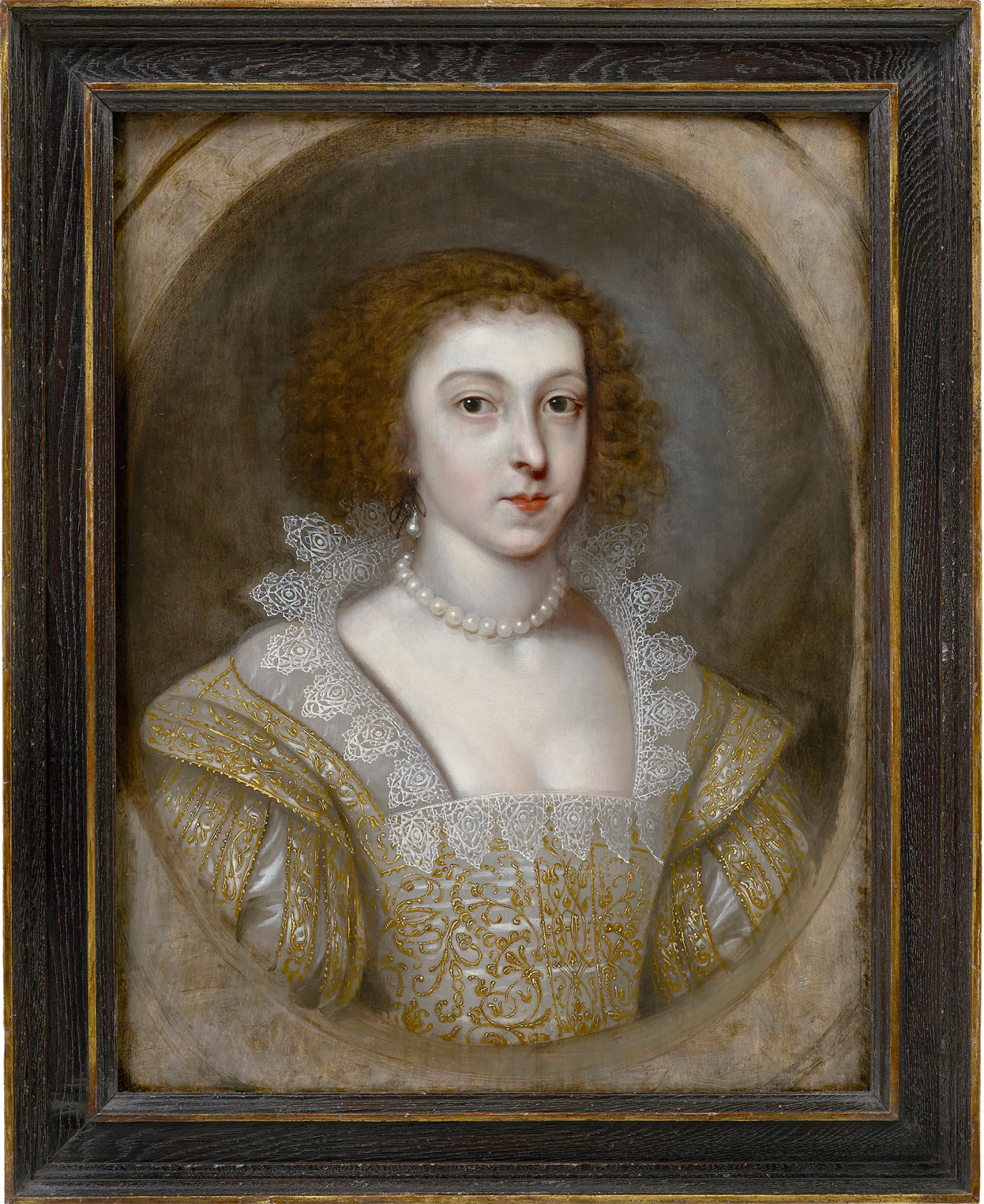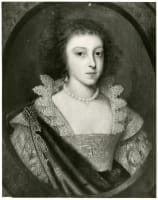This sensitive portrait of Lady Anne Audley was almost certainly painted to celebrate her marriage to Sir Henry Audley (1604-1666) in 1628.
Anne was the daughter of Humphrey Pakington (d.1631) and Abigail Sacheverell (c.1590-1631) of Harvington Hall, Worcestershire. The Pakingtons were a prominent West Midland family and were well-known at the courts of Henry VIII and later Elizabeth I. Anne’s great-uncle Sir John Pakington (d.1560) was made serjeant-at-law by Henry VIII in 1532 and was appointed a justice of North Wales. In 1542 he had a patent for justice of Brecknock, Glamorgan, and Radnor in south Wales and was granted for life all manors belonging to the monastery of Westwood in Worcestershire. At the time of his death in 1560, he was in control of thirty-one manors and owned vast areas of land acquired from seventy different people throughout his life.[1] After his death, his estate was divided between his nephew Sir Thomas Pakington and his brother Humphrey, the grandfather...
This sensitive portrait of Lady Anne Audley was almost certainly painted to celebrate her marriage to Sir Henry Audley (1604-1666) in 1628.
Anne was the daughter of Humphrey Pakington (d.1631) and Abigail Sacheverell (c.1590-1631) of Harvington Hall, Worcestershire. The Pakingtons were a prominent West Midland family and were well-known at the courts of Henry VIII and later Elizabeth I. Anne’s great-uncle Sir John Pakington (d.1560) was made serjeant-at-law by Henry VIII in 1532 and was appointed a justice of North Wales. In 1542 he had a patent for justice of Brecknock, Glamorgan, and Radnor in south Wales and was granted for life all manors belonging to the monastery of Westwood in Worcestershire. At the time of his death in 1560, he was in control of thirty-one manors and owned vast areas of land acquired from seventy different people throughout his life.[1] After his death, his estate was divided between his nephew Sir Thomas Pakington and his brother Humphrey, the grandfather of the subject of our work. Anne’s third cousin was Sir John Pakington who was invited to court by Elizabeth I and quickly gained fame for his wit, good looks, and athleticism. He was renowned for his lavish lifestyle (which he could not afford to maintain) and was given the nickname ‘Lusty Pakington’ by the Queen. In 1628, on her marriage to Sir Henry Audley of Berechurch, Essex, Anne was assigned her father’s manor at Prior’s Ditton in Shropshire. The present portrait was probably commissioned to celebrate Anne’s marriage and her vastly improved wealth and social status.
She is shown wearing a fine, intricately embroidered satin dress with slashed figure-of-eight ‘virago’ sleeves which would have been tied at the elbow. They were typically worn with an over gown and were fashionable in England and on the Continent between roughly 1620 and 1632. Anne is also shown wearing an elaborate lace collar with a string of pearls, symbolic of wealth and purity, and a single pearl suspended from the ear with a gold hoop and looped black lace. This combination of jewellery was particularly popular in England at this date, as attested in numerous portraits by court painter Sir Anthony van Dyck (1599-1641), and was often worn with low-cut bodices to subtly complement the skin tones.
This likeness of Anne was considered a success and at least two versions were painted. Another version is known only from an old black and white photograph recorded in the archives at the Yale Center for British Art and follows the same composition as the present work, albeit with the addition of a fur-lined sash worn over Anne’s left shoulder.
[1] A large book concerning his estate was at one point in the possession of the family. Quoted in Townend, P (ed.) 1974. Burke’s Genealogical and Heraldic History of the Peerage, Baronetage and Knightage. 104th edition. London: Burke’s Peerage Limited, p. 1154.
Technical Expertise
Prof. Dr. Peter Klein, Dendrochronological Analysis Report, 16 January 2013









